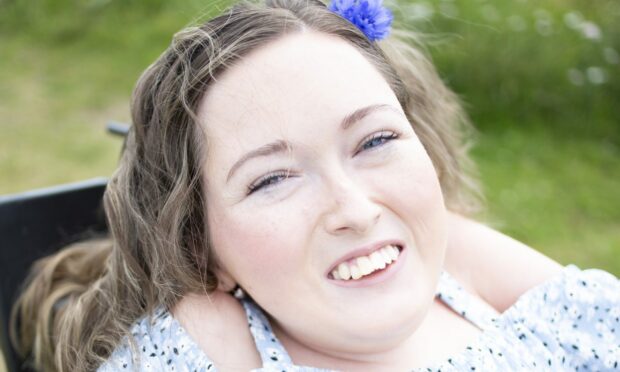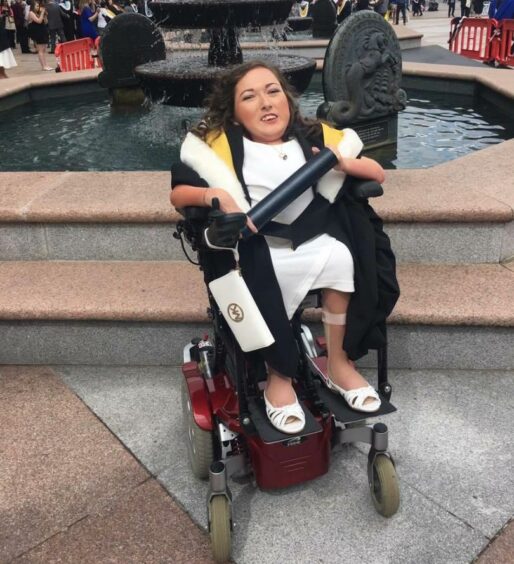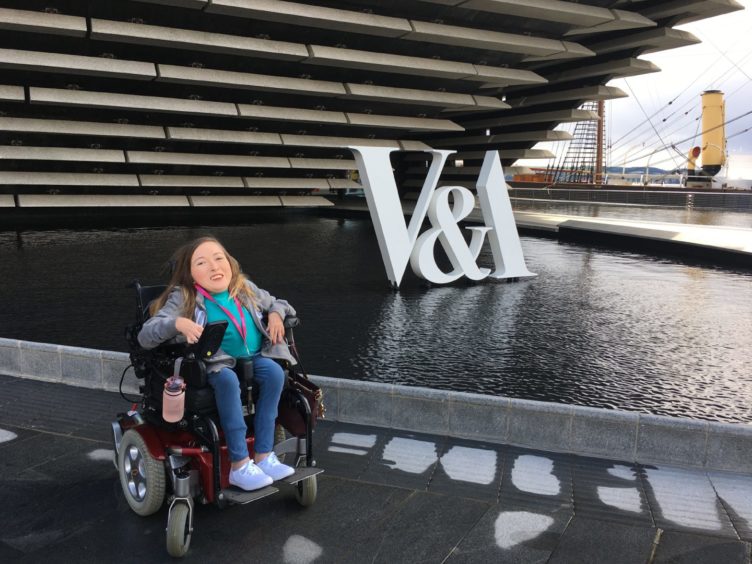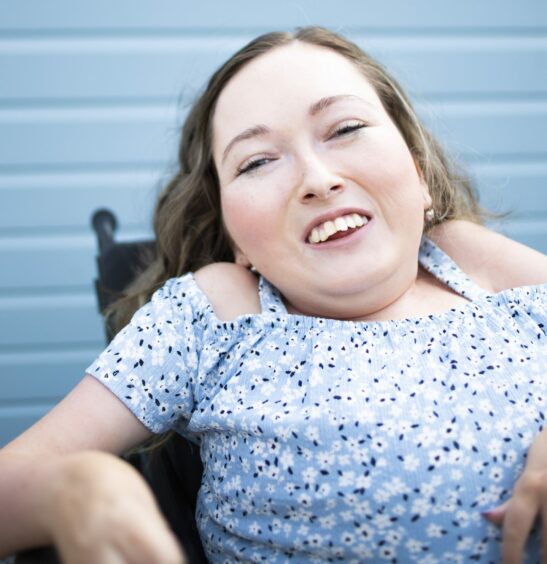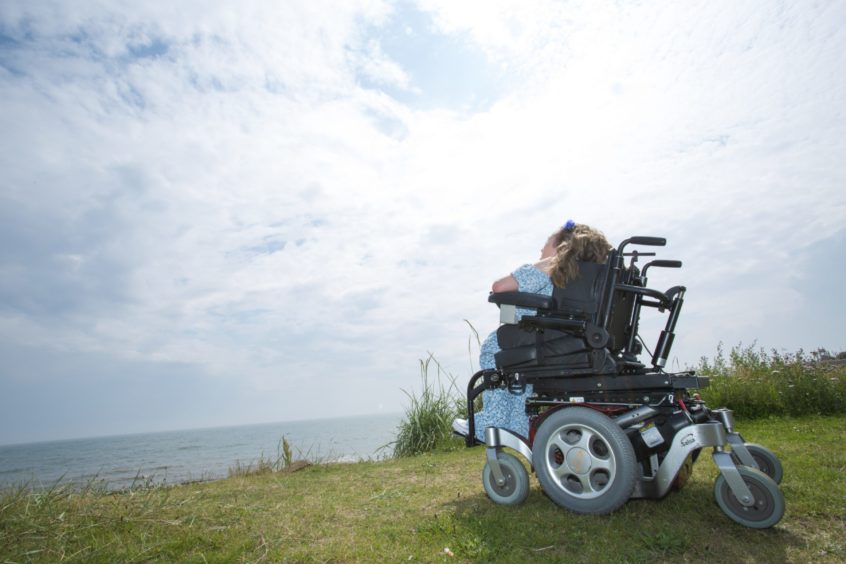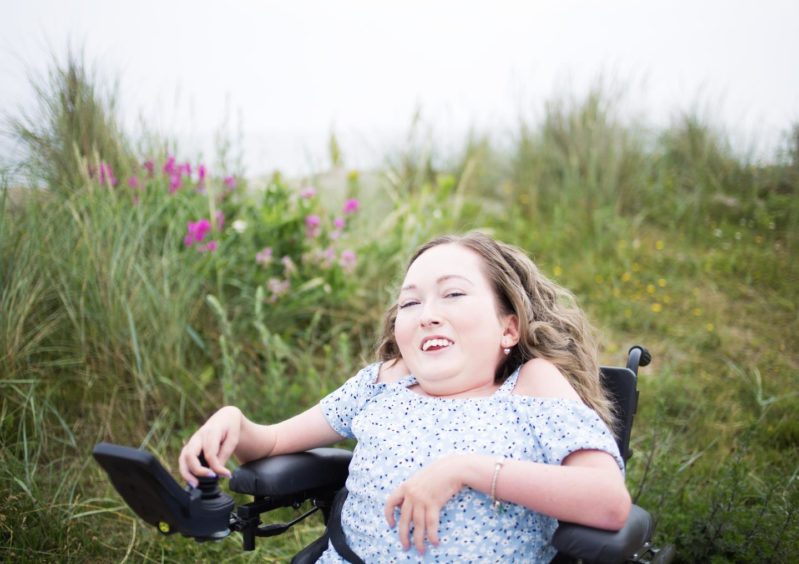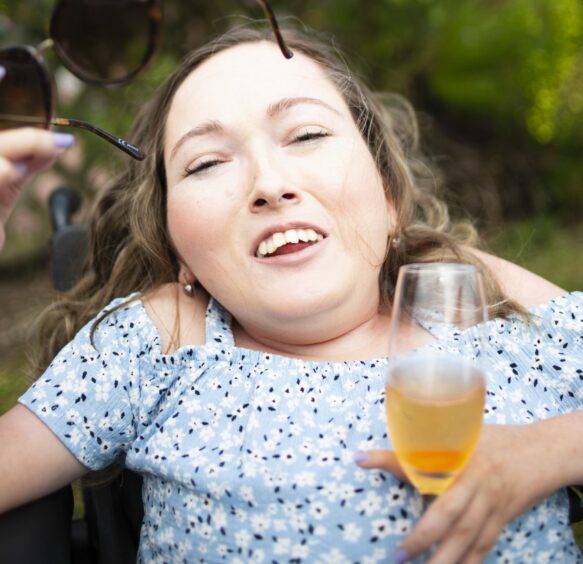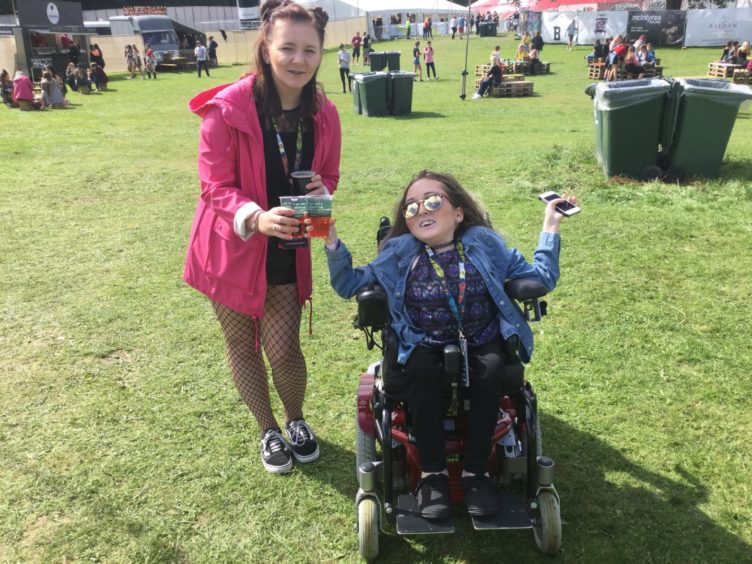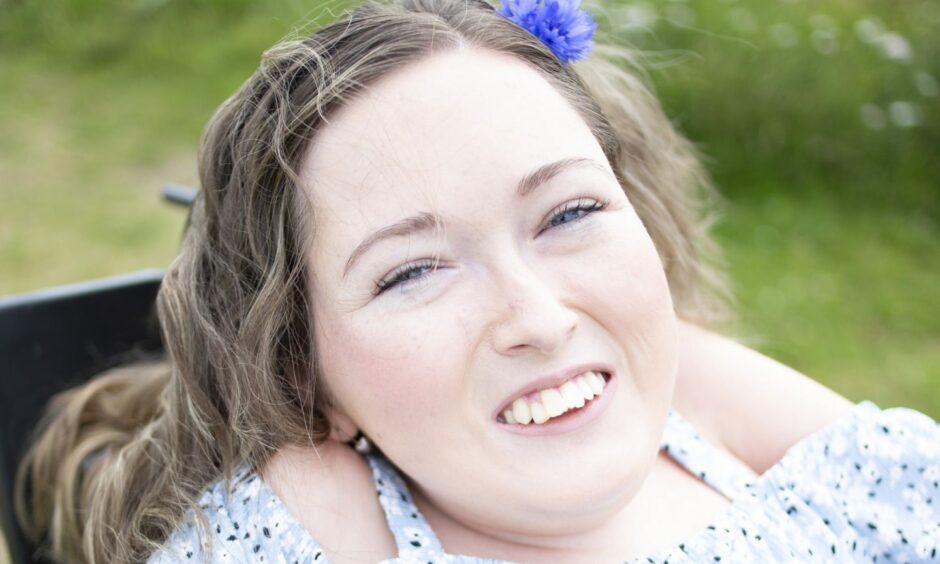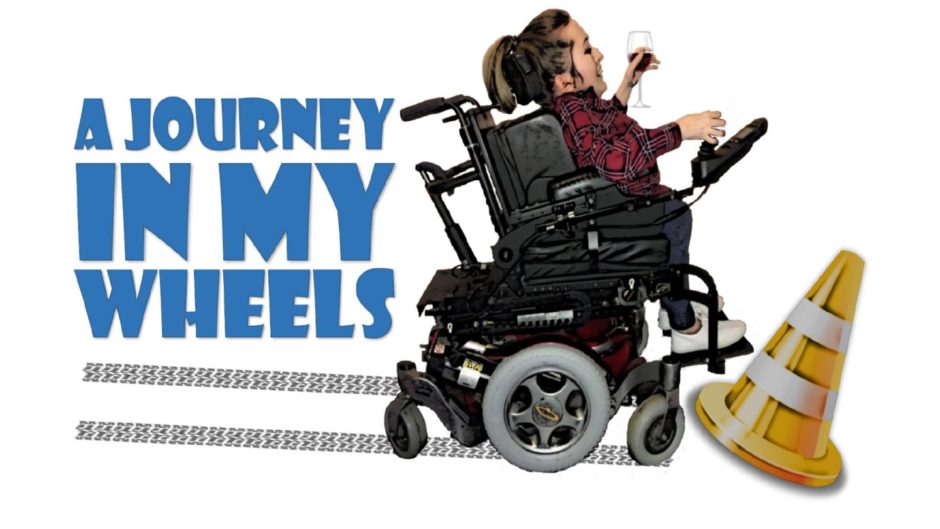Michael Alexander speaks to Tayside woman Claire D’All, a wheelchair user since the age of three, who works part-time for Euan’s Guide, a website for disabled people to review accessible places to visit.
Twenty-six year old Dundee woman Claire D’All laughs when she thinks back to her Dundee University graduation ceremony at the Caird Hall in 2016.
As she sat in the wings of the stage, waiting for her name to be called so that she could collect her Honours degree in Applied Computing, she was anxiously wondering what would happen if her wheelchair broke down.
“It was nerve racking!” she laughs, recalling how she enjoyed a great day having lunch with her friends and family and attending the graduation garden party.
Claire, who was born with Congenital Muscular Dystrophy and has used a powered wheelchair since the age of three, overcame concerns from some people that she might get too tired and wouldn’t manage the studying when she applied for university.
Refusing to let her disability hold her back, she smiles that she enjoyed the social aspect of being a student more than the studying, and she remains grateful for the support of her parents – and the university – who helped get her through.
But when Claire reflects on the wider challenges facing people who live with disabilities, she says there’s still work to be done if society is to be more accommodating of diverse needs.
Representation
“I think there needs to be more media representation of disabled people in fashion, TV, and more,” says Claire, who recently took a life changing step towards independence by moving into her own flat in Angus.
“When I go out and about, some people might come up to me and say they are ‘so inspired’ that I’ve left my house.
“But I might just be shopping in Primark or going for a coffee with friends which are normal things anyone should be able to do without being judged.
“Things are getting better. Maybe as I get older I don’t notice people staring at me so much.
“But it’s like it’s still not normal for people in wheelchairs to be out and about, and that needs to change.”
Life growing up
A former pupil of Grange Primary, Monifieth, and Monifieth High School, Claire was always in mainstream education.
Growing up, she had a great group of friends around her and when younger she didn’t really see herself as disabled.
She enjoyed being out with her family – parents Yvonne and Ken and younger brother Martin.
She went to Rainbows, Brownies and Guides and at high school, she did dancing for a few years.
However, life was not without its challenges. She experienced her fair share of children staring at her as a youngster and was occasionally “harassed”.
She admits this got on her nerves and, as a 13-year-old, already dealing with teenage angst, she remembers having a particularly hard time of it as she came to “resent” her disability and didn’t cope well.
She found that many people would make assumptions about her because she used a wheelchair.
There were also difficult times for her family amid great uncertainty.
“When I was five years old a doctor told my parents I wouldn’t live to go to primary school which was obviously not a great thing to hear,” she says.
“But they always just pushed me to do what I wanted to do.
“In primary school I had a lot of illnesses which meant I wasn’t at school.
“When I came back I had a few more disabilities that were on show.
“I was just a wheelchair user when I was younger. When I came back to school I had oxygen I had to use during the day and I had a feeding tube.
“So I feel that kind of distanced me from my peers a little. It was a bit more visible that I was unwell.
“But I managed. I went on my primary seven trip to York. The school always made me feel included but it was with the support of my parents that I was able to do that.
“When I was on oxygen my mum had to be at the school if there was an emergency because the school weren’t really responsible for that sort of thing.”
Opening of doors
After graduating from university, Claire struggled to find a job.
She wanted to stay in the Dundee area for work, healthcare and social care reasons.
However, what might have been a setback actually opened other doors.
Claire would always talk about living with a disability and share issues that came up when she visited places.
So when her mum and a friend suggested she wrote about these experiences and share them online, her A Journey In My Wheels blog was born.
From there, she was invited to become a keynote speaker with the charity PAMIS, which promotes a more inclusive society for people with profound and multiple learning disabilities and their families.
She spoke about her transition through life, education, university and through the social and health care system.
She met a few people there that led to her volunteering for a charity called Euan’s Guide.
Euan’s Guide is a disabled access review website where individuals share their experience of visiting venues based on accessibility.
Dundee ambassador
Claire became their Dundee Ambassador in 2017 and now works for them as their Reviewer Engagement and Outreach Coordinator.
When Claire is writing reviews about accessibility, she is “extremely honest” but at the same time tries to be positive.
It tends to be older, usually listed, buildings that prove most difficult for wheelchair access, she says.
“Obviously I do my research before I go anywhere anyway, and most places I get in,” she adds.
However, if something isn’t suitable, she gives suggestions on how it could be improved.
School visits
Claire believes young people today are generally much more aware about disability issues because education has improved.
She herself goes into schools to talk about living with a disability, because she believes the younger awareness is raised the better.
However, there is still work to be done and she continues to take a stand about how people with disabilities are portrayed in the media.
She wants to see “greater accuracy” and for there to be more accommodation in the media of disabled peoples’ “diverse needs”.
She is now a member of The Divergent Influencers, a collective of young Scots in their 20s, who have been selected by charity ARC Scotland to be media spokespeople and role models for inclusion and accessibility.
The seven young people have a variety of conditions; including autism, mental health problems, dwarfism, gender dysphoria and physical disabilities requiring the use of a wheelchair.
They were chosen last year as part of a Young Leaders Project run by the charity which helps support young people with additional support needs as they move on to adult life.
Best practice guide
Following interactions with broadcast, print and online journalists, the group decided to produce a best practice guide to have more say in how people with disabilities are represented in the media.
Suggestions include: if a broadcast interview is mooted, individuals should be given a choice as to whether they wish to be interviewed live or be pre-recorded.
A video call at home is preferable because, in many cases, carer support is required to travel to venues which may not be fully accessible.
More people with a range of disabilities should routinely appear in the media and not just for one-off campaigns. (For instance, in vox pops and as contributors in debates).
People should always be interviewed at eye level. One of the Divergent Influencers with dwarfism said: “If people crouch down to speak to me it feels like I am being treated as a child.”
People with disabilities want to be treated like everyone else. They don’t want to be patronised and termed ‘heroes’ for doing everyday tasks. One young person said, “I get called inspirational because I go to the shops.”
Covid-19 challenges
“Joining the Divergent Influencers has been really good,” says Claire.
“We met up at the end of 2019 and we had all these plans, but obviously Covid started. We’ve worked really well together over Zoom.
“It has been a really bad situation the world finds itself in, but I’s been good as well. We have this technology now that we can communicate without being in the same room.”
The Covid-19 lockdown has of course brought other challenges.
Claire describes herself as “really sociable”, so when she had to go into shielding in March 2020 for what the government said would be 12 weeks, there was anxiety.
Placed on furlough, and with her carers – wearing full PPE – limited when they could visit her, it was a challenging time.
On a brighter note, however, Claire moved out of her parents’ house into her own supported flat during the pandemic, and has thoroughly enjoyed her new found independence as she strives to live her life to the fullest.
- To read Claire’s blog go to https://www.ajourneyinmywheels.org/
